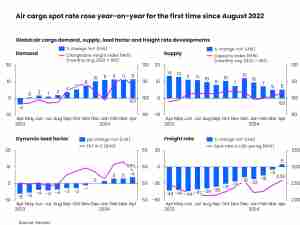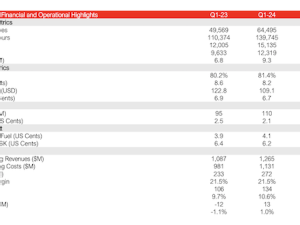Boeing Co. fell as much as 2.5% to its lowest in five months after the New York Times reported that the Federal Aviation Administration is investigating an engineer’s complaint about safety issues with its 787 Dreamliner aircraft.
The whistleblower, a Boeing employee who worked on the plane, alleged that sections of the 787’s fuselage were improperly fastened together in a way that could weaken the aircraft over time, and that repair work and testing was performed in the wrong fashion, the newspaper reported.
“These claims about the structural integrity of the 787 are inaccurate and do not represent the comprehensive work Boeing has done to ensure the quality and long-term safety of the aircraft,” the US planemaker said in a statement responding to the report. Company engineers are “completing exhaustive analysis to determine any long-term inspection and maintenance required, with oversight from the FAA,” it said.
The report threatens to intensify the scrutiny that Boeing is facing as it grapples with a crisis of confidence after a fuselage panel blew out on an almost-new 737 Max 9 jet on Jan. 5. While nobody on that flight was seriously hurt, the issue has put the spotlight on Boeing’s manufacturing and safety procedures and has led to a wholesale makeover of senior management.
‘Significant Fatigue’
Lawyers for Sam Salehpour, the whistleblower, said that Boeing displayed “major lapses in the company’s quality control process” while it addressed repair work on the 787. These included what the engineer called “shortcuts” during both the engineering and the testing stage of the repairs, according to a letter to FAA Administrator Michael Whitaker dated Jan. 19 by the whistleblower’s law firm, Katz Banks Kumin LLP in Washington.
The omission affects more than 1,000 787 aircraft in service, according to the letter, and can result in what was called “significant fatigue” in important airplane components, especially in joint areas where large fuselage barrels are connected, the letter said.
Boeing disputed those claims as inaccurate. The stock has lost 31% this year, the worst performence on the Dow Jones Industrial Average.
The 787 Dreamliner is Boeing’s most advanced aircraft in service and uses large composite-material barrels for its fuselage. Assembly mishaps including flaws in how sections of the 787’s carbon fiber frame were joined together caused deliveries of the aircraft to be largely shut down for the better part of two years earlier this decade.
Deliveries were allowed to resumed in 2022 after the FAA approved manufacturing changes to ensure the planes were built in accordance with safety standards. Boeing said on Tuesday that based on this analysis and any future inspections, the 787 will maintain its strength, durability and service life with Boeing saying the jet can safely operate for more than 30 years.
“Voluntary reporting without fear of reprisal is a critical component in aviation safety,” the FAA said in a statement. “We strongly encourage everyone in the aviation industry to share information. We thoroughly investigate all reports.”










